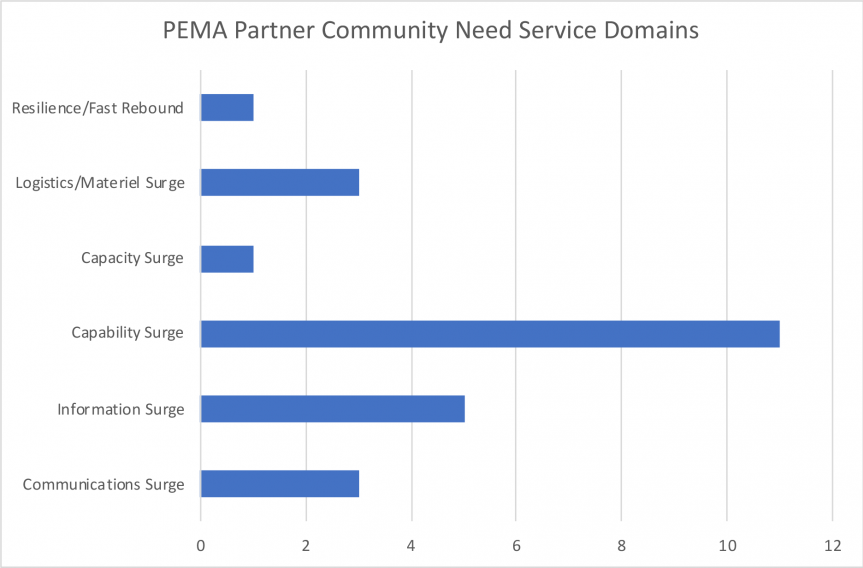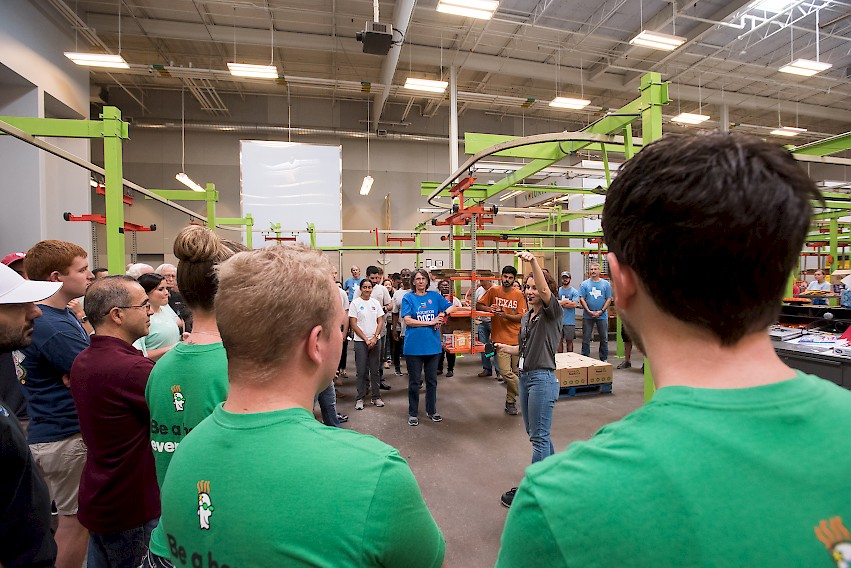Collaboration between public entities and private companies is essential to prepare for disasters. However, current partnerships can be formal and cumbersome to the point of detriment, or impromptu and do little to achieve their goals. This unmet need to find appropriate partnership mechanisms could be addressed by the Harvard National Preparedness Leadership Initiative (NPLI)’s Predictable Surge framework, a model presented in Domestic Preparedness Journal in August 2019. It aims to inform an emergency manager’s understanding of the response ecosystem and productively engage potential private partners. This model has been further developed through a pilot with the Providence Emergency Management Agency (PEMA), located in Providence, Rhode Island, in the summer of 2021.
 The Predictable Surge framework categorizes public-private coordination and collaboration into four groups: formal, semi-formal, informal, and disengaged partnerships. Each structure has its own costs and benefits, and partnerships within all four categories are critical to foster community preparedness, response capacity, and resilience. Additionally, the framework describes six domains of community needs that must be met during emergency response and recovery (see Table 1).
The Predictable Surge framework categorizes public-private coordination and collaboration into four groups: formal, semi-formal, informal, and disengaged partnerships. Each structure has its own costs and benefits, and partnerships within all four categories are critical to foster community preparedness, response capacity, and resilience. Additionally, the framework describes six domains of community needs that must be met during emergency response and recovery (see Table 1).
The Predictable Surge framework encourages public emergency management entities to engage with potential and current collaborators using the various partnership structures across all community need domains. Through this approach, partners can recognize points of intersection and identify response actions they can take to complement the others’ programs, reducing the risk of duplicated efforts and increasing efficacy of response. Ultimately, these networks will guide a disaster response that fosters efficient and effective collaboration and maintains space for flexibility.
| Commuity Need | Organizational Characteristics |
|---|---|
| Resilience/Fast Rebound |
Can resume their pre-emergency operations for public use (e.g., hardware stores providing materials to rebuild) |
| Logistics/Materiel Surge |
Have existing ability to distribute and transport goods (e.g., trucking or shipping companies) |
| Capacity Surge | Can create a surplus of goods/services, amplifying a service that the public partner already has the ability to do |
| Capability Surge | Provide a specialized service that the public partner cannot or has limited capability to do |
| Information Surge |
Can quickly gather or disseminate information (e.g., companies with private emergency alert systems) |
| Communications Surge | Can increase the communications network of the partner (e.g., telecommunications companies) |
An Opportunity to Pilot
After the Predictable Surge model was presented in 2019, a subsequent opportunity to pilot this in the field arose with the Providence Emergency Management Agency (PEMA). The pilot used the Predictable Surge framework to analyze PEMA’s private-public partnership ecosystem for disaster preparedness to identify clusters, gaps, and overlaps.
The first step of the project was to define the community need domains described by the Predictable Surge framework in the PEMA context. This process involved identifying which businesses in the Providence area might be able to provide emergency response and recovery support in a given domain, for example:
- Local hardware stores could provide resources in the resilience/fast rebound area.
- The Rhode Island Community Food Bank could support needs in the logistics/materiel surge category.
- National Grid, a gas and electricity company, could contribute to the information surge domain.
A pilot study of the Predictable Surge framework demonstrates the value of using various partnership structures across all community need domains.
The next step was to conduct a thorough document review to catalogue existing partnerships that PEMA maintains with private entities. This included documents such as the PEMA Emergency Operations Plan, Recovery Plan, Shelter Plan, Fox Point Hurricane Barrier Coordination Guide, and various memorandums of understandings (MOUs). Based on this review, the team conducting the pilot identified private partner activities to bolster emergency preparedness and response, which were then stratified into the various community need domains to create a partnership matrix. The PEMA team was consulted throughout the review process, and the final partnership matrix was reviewed in a collaborative effort to identify areas of surplus partnerships and domains in which there were gaps in coverage from private partners.
All named activities that PEMA committed to complete to support the private partners should a disaster occur were stratified by the community need domains as well. Special attention was paid to note named potential private partners that were not yet engaged in any emergency preparedness or response activities with PEMA, yet with potential as future partners.
Implications for Practice
This Predictable Surge analysis found PEMA’s private-public partnership ecosystem to be robust with 18 formal partnerships, many of them spanning multiple community needs domains (see Figure 1). There was a high volume of partnerships in the Capability Surge domain, which included groups that ranged from the Roger Williams Park Zoo to the Sodexo catering company, all of which provide a specialized service outside of PEMA’s internal capabilities. The analysis also identified opportunities for growth, namely in the Resilience/Fast Rebound and Capacity Surge domains, which only had one partner each.

Fig. 1. Number of PEMA’s private partners by the Predictable Surge framework’s community need domains (Source: Sara Kelly, 2021).
According to Dr. Clara Decerbo, Director of PEMA:
Evaluating PEMA’s public-private partnerships enabled our team to reflect not only on our capabilities but also on what work remains in order to engage new partners to improve disaster response and recovery in our community. This work is especially important as we enter the third year of response to the COVID-19 pandemic, which has had significant impacts on our city’s public and private sectors.
Providence is a small city with a population of less than 200,000 people, but it is a popular destination with an active private sector. The findings in Providence provide an example of predictable surge for communities that have similar profiles and partnerships as PEMA. The Predictable Surge framework could help other emergency management agencies evaluate their own private-public partnership ecosystems.

Feeding San Diego COO Alicia Saake came to Houston as a volunteer shift leader, and wraps up this shift of individual, group, and company volunteers from Go Daddy, Maxim, Chevron, Phillip 66, LyondellBasell, BASF, Dow Chemical, and EDP Renewables. Source: U.S. Department of Agriculture, Public domain, via Wikimedia Commons (2017).
The NPLI’s Predictable Surge framework was successfully applied to PEMA’s response ecosystem and can be used to identify current partners’ value-add, as well as areas of surplus and scarcity in the various community need domains. The following broad steps should be used for organizations who want to apply this framework to evaluate their own current private-public partnership ecosystems:
- Identify the context in which to evaluate and engage emergency management stakeholders in key organizations of interest.
- Collect relevant data to analyze (e.g., review key documents, conduct interviews with stakeholders).
- Apply the Predictable Surge framework to stratify existing partnerships along the community needs domains and identify areas of surplus and deficit.
With major disasters such as the December 2021 tornados in Kentucky and the Midwest, there are many contexts in which the Predictable Surge framework would be a valuable addition to the emergency management toolkit. The process and results of applying this framework should provide a way to prompt conversations with partners and potential partners about resources, needs, constraints, etc. It is a beneficial way for each partner to better understand the other and find leverage points to facilitate collaboration. The outcome should be a more robust ecosystem that is better positioned to serve the community when it matters most.
